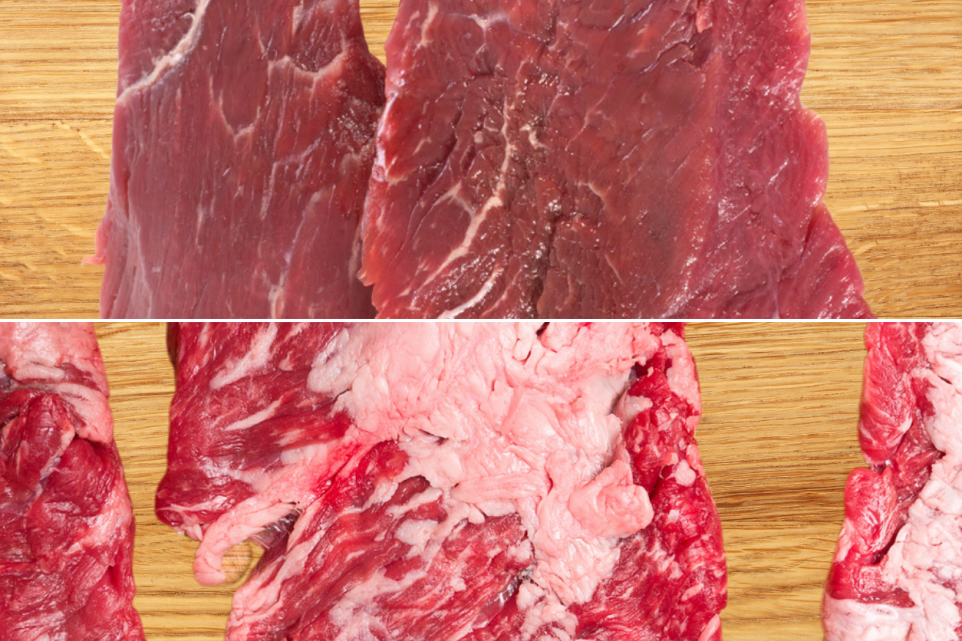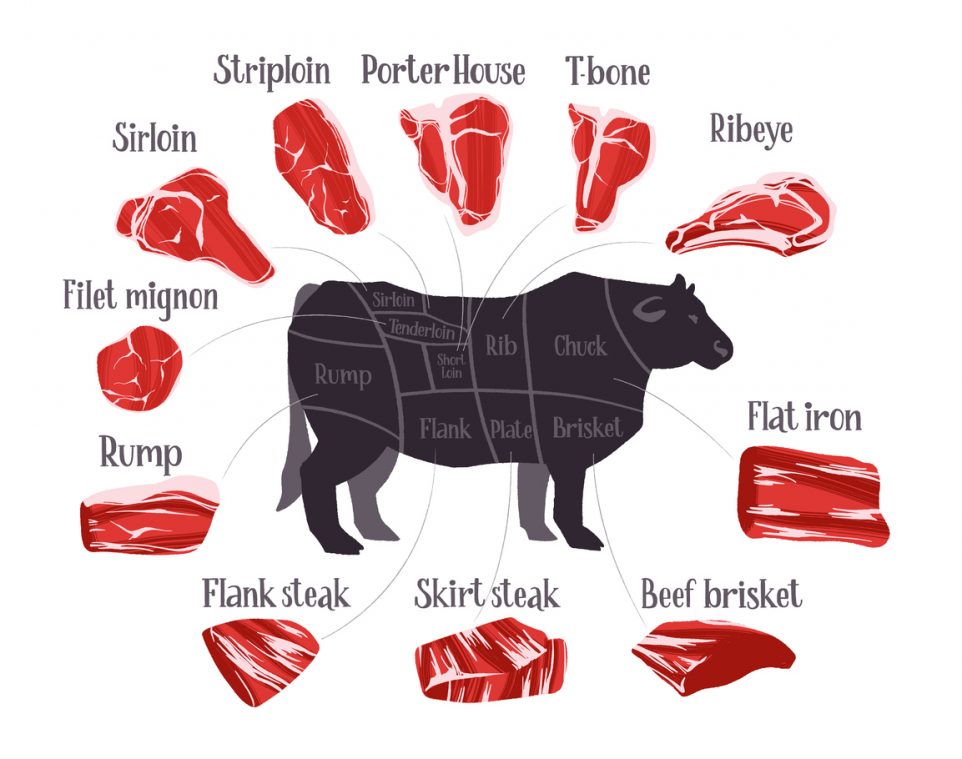Skirt Steak vs. Flank Steak: What’s the Difference and How to Cook Each

Every time I’m at the supermarket, I see at least one person standing in the meat aisle, puzzled by all the different cuts of steak on display, not being able to tell which is which. If you’re thinking, “That’s so me!” well, now you have proof that you’re not alone. There are so many different cuts of meat that it’s impossible to cover them all in one blog, so for this one, I’ll focus on the two most common ones that you’ll find: the skirt steak and the flank steak. Both cuts are fabulous for different reasons and shine under different circumstances. I’ll walk you through what makes each cut unique and share some tips on how to cook them to perfection.

What is Skirt Steak?
Skirt steak, a cut prized for its flavor, has a storied reputation, especially in cuisines where tender, robust meats are savored, like in Mexican fajitas. This cut is part of the beef plate section, which is just below the rib. There are two types of skirt steak: the inside skirt and the outside skirt. The inside skirt comes from the transverse abdominus muscle and is found on the inner cavity of the animal, while the outside skirt is part of the diaphragm muscle located more towards the animal’s outer side.
The outside skirt is generally more tender and flavorful compared to the inside skirt, often making it the preferred choice in restaurant settings. It’s important to note, however, that the outside skirt usually comes with a membrane that needs to be removed before cooking. If you’re buying skirt steak for a special dish and find it tough, it’s likely you’ve ended up with the inside skirt, which is tougher and more commonly found at grocery stores due to its lower cost.
What is Flank Steak?
Moving down the cow’s body, flank steak is another beloved cut known for its strong beefy flavor and lean profile. Found in the abdominal muscles of the cow, just below the loin, this cut is distinctly different from the skirt steak in both texture and muscle structure. Flank steak is more uniform in thickness and has a wider, flatter shape, which makes it ideal for various cooking methods, though it shines best when marinated and grilled.
Despite being lean, flank steak offers a rich, intense beef flavor that makes it incredibly versatile in the kitchen. It’s often used in dishes that require slices of beef, such as stir-fries or London broil, and it’s particularly popular in Latin American cuisine. To ensure tenderness, it’s crucial to cook flank steak only to medium-rare and slice it against the grain. This helps break up the muscle fibers and makes for a more tender eating experience.
Both skirt steak and flank steak offer unique qualities that make them favorites among beef enthusiasts. Whether grilled, marinated, or stir-fried, these cuts bring delightful flavors and textures to the table, making any meal a robust culinary adventure.
How to Cook Skirt Steak
Cooking skirt steak is all about embracing its rich marbling and robust flavor, which makes it ideal for marinating. If you’re aiming to make your skirt steak as tender and flavorful as possible, here’s how to do it right. First, if you have the option, choose an outside skirt steak, which comes from a section of the beef just behind the brisket. This cut typically has more fat, enhancing its flavor and tenderness.
When marinating skirt steak, a mix of acid and oil is the way to go. Acid, like sherry vinegar or citrus juice, helps to break down the tougher fibers and tenderize the meat, while oil, such as a good quality olive oil, helps to carry the flavors of added seasonings like garlic, herbs, and spices into the meat. A good tip is to keep the marinating time to about three to four hours to prevent the meat from becoming too soft.
When it’s time to cook, grilling is a fantastic choice for bringing out the best in skirt steak. Ensure your grill is hot to achieve those coveted grill marks and a delicious sear. Remember, skirt steak cooks quickly due to its thinness, so keep an eye on it to ensure it doesn’t overcook. Ideally, you want to aim for medium-rare to keep the steak juicy and flavorful. Finally, always slice skirt steak against the grain. This cuts through the muscle fibers and makes the steak more tender and easier to eat.
How to Cook Flank Steak
Flank steak, known for its lean yet flavorful profile, thrives with a bit of care in preparation and cooking. Like skirt steak, it benefits greatly from marinating. A simple yet effective marinade could include lemon juice or balsamic vinegar, garlic, and Dijon mustard, along with some herbs and olive oil. The acidic components in the marinade help to tenderize the meat, while the oil and herbs infuse it with flavor.
When you’re ready to cook, broiling is an excellent method for flank steak, allowing you to get a rich sear without overcooking the meat. Preheat your broiler and place the steak on a broiler pan. For a medium-rare doneness, broil the steak for about eight minutes on each side. However, the thickness of the steak can affect cooking times, so adjustments may be necessary.
Once cooked, the key to a tender eating experience is in the slicing. Flank steak should be sliced thinly against the grain. This means cutting across the long muscle fibers, which shortens them and makes the meat easier to chew. Serving flank steak sliced not only makes it more enjoyable but also showcases its beautiful, even cooking and juicy interior. Whether served in a salad, as a main, or in fajitas, flank steak holds its own with a bold flavor and satisfying texture.
Our Recipe for Trust: Why Choose Kitchen Institute
At the Kitchen Institute, we're dedicated to providing reliable and accurate information on cooking trends, tips, and product reviews. Our team of passionate food enthusiasts ensures that every piece of content is thoroughly researched and based on real-world experience. We pride ourselves on our comprehensive and unbiased product reviews, rigorous research processes, and commitment to staying current with the latest culinary innovations. Trust us to enhance your culinary journey with quality insights and practical advice.